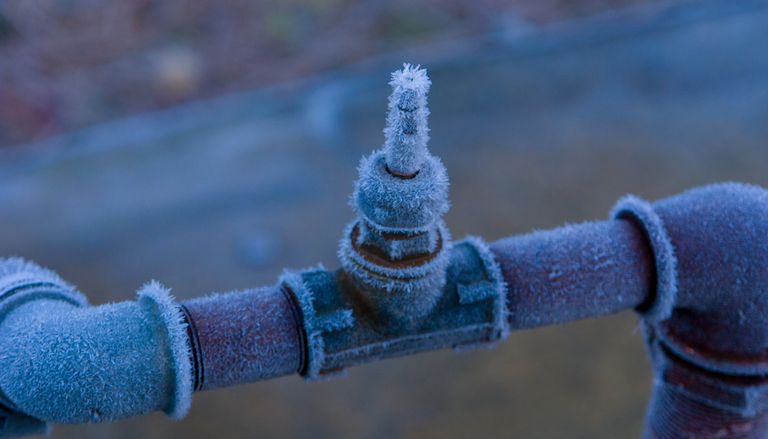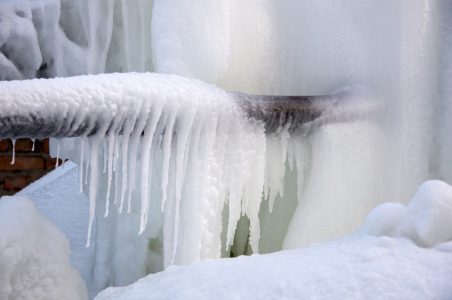Right here down the page you can find additional awesome facts all about 6 Ways to Prevent Frozen Pipes.

Winter can ruin your plumbing, especially by freezing pipelines. Here's how to prevent it from happening and what to do if it does.
Introduction
As temperatures drop, the threat of icy pipes increases, possibly leading to pricey repair work and water damages. Understanding just how to prevent icy pipelines is vital for house owners in cool environments.
Recognizing Icy Pipes
What triggers pipelines to ice up?
Pipelines freeze when subjected to temperature levels listed below 32 ° F (0 ° C) for extended durations. As water inside the pipelines ices up, it increases, taxing the pipe walls and potentially causing them to burst.
Risks and problems
Frozen pipelines can lead to supply of water disruptions, home damage, and expensive fixings. Burst pipelines can flooding homes and trigger extensive structural damage.
Indicators of Frozen Pipeline
Identifying frozen pipes early can stop them from breaking.
How to recognize frozen pipelines
Look for decreased water circulation from taps, uncommon smells or noises from pipelines, and visible frost on revealed pipes.
Avoidance Tips
Shielding vulnerable pipes
Wrap pipelines in insulation sleeves or utilize warmth tape to safeguard them from freezing temperature levels. Focus on pipes in unheated or outside locations of the home.
Home heating techniques
Keep interior spaces properly heated, specifically locations with pipes. Open cabinet doors to enable warm air to circulate around pipelines under sinks.
Shielding Exterior Pipes
Yard pipes and outdoor taps
Disconnect and drain pipes garden pipes before winter. Install frost-proof spigots or cover exterior taps with shielded caps.
What to Do If Your Pipes Freeze
Immediate actions to take
If you believe icy pipelines, keep taps open up to eliminate pressure as the ice thaws. Use a hairdryer or towels taken in hot water to thaw pipelines slowly.
Long-Term Solutions
Architectural modifications
Take into consideration rerouting pipes away from exterior wall surfaces or unheated areas. Include additional insulation to attics, basements, and crawl spaces.
Updating insulation
Invest in premium insulation for pipelines, attic rooms, and walls. Appropriate insulation assists maintain constant temperature levels and lowers the danger of icy pipelines.
Final thought
Preventing frozen pipes needs proactive actions and fast feedbacks. By recognizing the causes, indicators, and preventive measures, property owners can safeguard their plumbing throughout cold weather.
5 Ways to Prevent Frozen Pipes
Drain Outdoor Faucets and Disconnect Hoses
First, close the shut-off valve that controls the flow of water in the pipe to your outdoor faucet. Then, head outside to disconnect and drain your hose and open the outdoor faucet to allow the water to completely drain out of the line. Turn off the faucet when done. Finally, head back to the shut-off valve and drain the remaining water inside the pipe into a bucket or container. Additionally, if you have a home irrigation system, you should consider hiring an expert to clear the system of water each year.
Insulate Pipes
One of the best and most cost-effective methods for preventing frozen water pipes is to wrap your pipes with insulation. This is especially important for areas in your home that aren’t exposed to heat, such as an attic. We suggest using foam sleeves, which can typically be found at your local hardware store.
Keep Heat Running at 65
Your pipes are located inside your walls, and the temperature there is much colder than the rest of the house. To prevent your pipes from freezing, The Insurance Information Institute suggests that you keep your home heated to at least 65 degrees, even when traveling. You may want to invest in smart devices that can keep an eye on the temperature in your home while you’re away.
Leave Water Dripping
Moving water — even a small trickle — can prevent ice from forming inside your pipes. When freezing temps are imminent, start a drip of water from all faucets that serve exposed pipes. Leaving a few faucets running will also help relieve pressure inside the pipes and help prevent a rupture if the water inside freezes.
Open Cupboard Doors
Warm your kitchen and bathroom pipes by opening cupboards and vanities. You should also leave your interior doors ajar to help warm air circulate evenly throughout your home.

As a passionate reader about Winter Plumbing Precautions: Preventing Frozen Pipes, I imagined sharing that piece of content was really helpful. You should take the time to share this write-up if you liked it. Thanks for your time spent reading it.
Free Quote